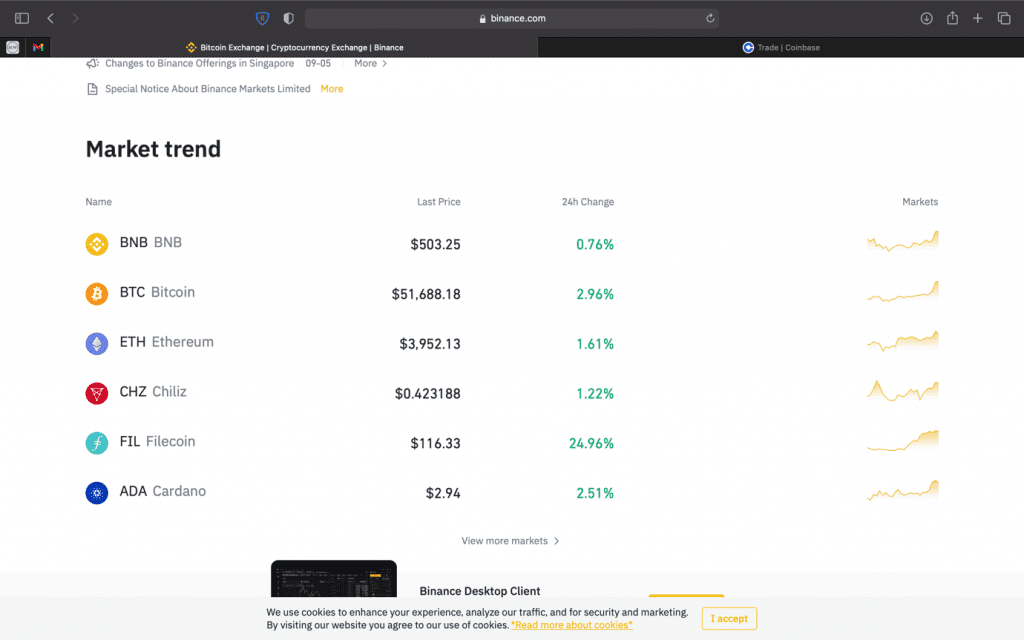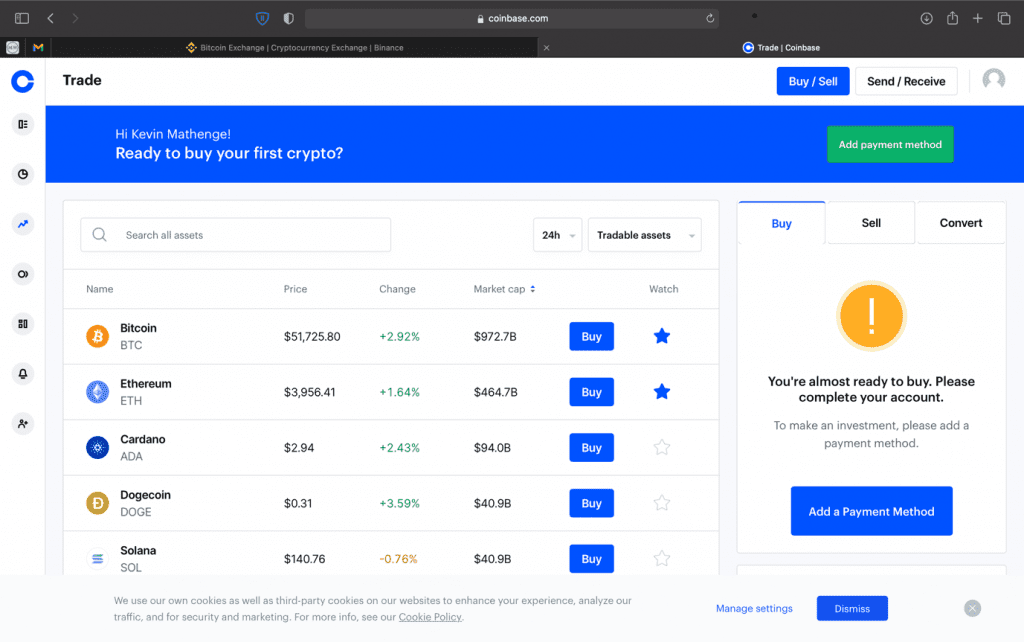Crypto Arbitrage: An Introduction to Arbitrage Trading in Crypto
The great diversity of crypto exchanges presents a fortuitous opportunity for traders – crypto arbitrage. With CoinMarketCap currently tracking about 309 cryptocurrency exchanges, a fraction of the total number that a recent estimate puts at 504 as of July 2021, arbitrage trading opportunities are bound to exist among these various exchanges. But how does this relationship come about?
This article will explore this question, thereby explaining arbitrage trading in crypto. It will also detail the factors creating arbitrage opportunities, how traders like yourself can leverage such opportunities, and the types of crypto arbitrage strategies to use while at it. This article will also expound on the benefits as well as the disadvantages of crypto arbitrage. But first, let’s discuss the crypto markets.
Crypto Exchanges and Markets
While the figures above perhaps offer a peek into the world of crypto exchanges, the reality is that the exact number of exchanges is hard to determine. This is because there is no legal requirement for these entities to register with a centralized authority. Even so, the thousands of tradable cryptocurrencies have to be exchanged – CoinMarketCap currently tracks more than 11,602 cryptocurrencies with a total market capitalization of over $2.2 trillion.
Owners of these crypto coins may opt to trade them for other cryptos or fiat currencies such as Euros, Dollars, Sterling Pounds, and more. And this is where exchanges play a vital role. By definition, a crypto exchange is a digital marketplace that brings together traders intending to buy or sell their cryptocurrencies. To gain an edge over other traders, many join telegram groups where they get tips from pro traders.
However, while all exchanges facilitate the purchase or sale of digital coins, they differ in how they execute the transactions. The differences lead to the categorization of these marketplaces into centralized and decentralized exchanges.
Centralized Exchanges
When you think about the term ‘cryptocurrency exchange,’ your mind automatically takes you to names like Binance and Coinbase. These two exchanges, the largest according to CoinMarketCap, represent what is known as centralized exchanges.
This type of digital marketplace operates on the principle of intermediaries, whereby companies manage withdrawals, trades, and funds on behalf of their users. Customers simply create accounts on the platform and deposit funds. Thereafter, all trades involving either the sale or purchase of an asset are conducted within the exchange and off the blockchain execute crypto transactions using order books. Simply, the customers cede a lot of power and authority to such platforms. Hence, the exchanges act as centralized authorities.
Notably, centralized exchanges manage transactions using order books, which consolidate the bid prices (highest price a buyer is willing to spend) and the ask prices (the lowest amount at which an owner wishes to sell). The order books also show the number of orders placed, which represents the volume.
If Trader A places an order to buy Coin Z in exchange for Coin Y (which they own) at a particular quoted price or exchange rate, the exchange matches this order with another trade in which the trader wishes to sell Coin Z at a similar rate and buy Coin Y. The exchange then arrives at the price of both assets by establishing the equilibrium point at which most of the transactions are being completed.
Decentralized Exchanges
Unlike centralized exchanges, decentralized exchanges do not ‘usurp’ authority from the customers. They do not require them to deposit funds or assets, neither do they complete the transactions off the blockchain. Instead, open-source marketplaces enable the users to transact digital assets on a peer-to-peer arrangement.
Nonetheless, while all centralized exchanges use the concept of the order book, decentralized marketplaces utilize different algorithms and technologies to execute trades. Our earlier article explored how Uniswap exchange, the second on CoinMarketCap’s top decentralized exchanges list, works. The differences between how decentralized exchanges arrive at their prices create price discrepancies, which bring about arbitrage opportunities.
Crypto Arbitrage
Before answering what is arbitrage, let’s first explore the relationship between arbitrage and cryptocurrency exchanges.
Relationship between Crypto Arbitrage and Crypto Exchanges
As highlighted, there are hundreds of different exchanges, each of which either operates its own order book – in centralized exchanges – or uses a disparate format of arriving at the price. The different price calculation models create price discrepancies between the digital coins, giving rise to a crypto arbitrage platform.
How Crypto Arbitraging Works
Let’s take an instance where both centralized and decentralized exchanges support the purchase or sale of Coin Z and Coin Y. If Exchange 1 exchanges the Coin Z/Coin Y trading pair at a rate of 1/4.50, while Exchange 2 exchanges the same trading pair at a rate of 1/4.35, a crypto arbitrage opportunity arises. A trader can make 0.15 (4.50-4.35) in profit by purchasing 4.5 units of Coin Y for 1 unit of Coin Z on Exchange 2 and immediately selling 4.35 units of Coin Y for 1 unit of Coin Z at Exchange 1.
Such a transaction simply ensures that the trader regains the initial number of units (1) of the coin they originally had (Coin Z) but having acquired 0.15 additional units of Coin Y, which they initially did not own.
Notably, this scenario describes one of the many types of crypto arbitrage strategies – the two-leg or simple arbitrage – perfectly detailing how crypto arbitraging works.
Types of Crypto Arbitrage Strategies
Cryptocurrency trading is particularly risky and challenging to execute owing to the volatility of the market. As a result, it may not be outrightly clear when the prices may increase or decrease, which calls for traders to constantly track signals and analyze patterns generated by recent price movements to predict future prices. Therefore, it comes as no surprise that crypto traders leverage every opportunity that arises to make earn profits.
As one such opportunity, crypto arbitraging exploits market inefficiencies to maximize gains. Importantly, traders can deploy several crypto arbitrage strategies, including:
- Simple arbitrage
- Triangular arbitrage
- Statistical arbitrage
- Cross-border arbitrage
Simple arbitrage
Simple arbitrage, also known as two-leg arbitraging, entails exploiting price differences between two cryptocurrency tokens traded in two different exchanges. However, the simple arbitrage strategy is quite simplistic. So much so that other traders can easily notice the opportunity by simply looking at the order books for two or more exchanges to determine the volume and current market prices for each of these marketplaces. They can then rush in to capitalize on the arbitraging opportunity.
As at the writing of this article, simple arbitrage opportunities existed between Binance and Coinbase for both Ethereum and Bitcoin. Traders could earn as much as $37.62 in profit by buying BTC on Binance and selling it on Coinbase, and $4.28 by leveraging Ethereum’s price inefficiencies.
Screenshot of Binance’s Order Book
Screenshot of Coinbase’s Order Book
This crypto arbitraging strategy takes advantage of price discrepancies between two digital coins, but this does not mean that traders cannot seek inefficiencies across more than two coins.
Triangular arbitrage
When traders leverage price differences across three cryptocurrencies, this type of strategy is known as triangular arbitrage. To better understand what this form of arbitraging entails, let’s imagine that a crypto exchange facilitates the trade of Coin X, Coin Y, and Coin Z as X/Y, Y/Z, and Z/X trading pairs. If, for instance, these trading pairs are offered at rates of 1/50, 2/3, and 27/2000, respectively, an arbitrage opportunity would exist as follows:
- 1 unit of Coin X exchanged for 50 units of Coin Y
- 50 units of Coin Y exchanged for 75 units of Coin Z
- 75 units of Coin Z exchanged for 1.0125 units of Coin X
This triangular arbitrage opportunity would result in the trader gaining 0.0125 additional units of Coin X by simply leveraging the inefficiencies across three different digital assets. Importantly, while this strategy can be used on a single exchange, there is a higher likelihood of its occurrence across two or more exchanges.
At the same time, the introduction of a third variable, in the form of a third coin, makes triangular arbitrage harder to identify than simple arbitrage. However, it results in more profits if successfully established and executed.
Statistical arbitrage (stat arb)
Also known as pairs trading, statistical arbitrage entails using a mathematical model to identify a relationship between two cryptocurrencies. A simple example of a relationship between two coins is reversion to the mean/ mean reversion. It is based on a theory that suggests that two assets will experience the same market forces. The forces cause their prices to move together. This relationship can then be modeled using the cointegration approach.
It is worth pointing out that the use of models makes this type of crypto arbitrage strategy generally difficult to execute. It is also risky, especially in a cryptocurrency market, where could quickly render the models ineffective and obsolete.
Cross-border arbitrage
If two exchanges are located in different countries, traders can leverage inefficiencies brought about by foreign exchange rates. Naturally, countries do not buy or sell currencies at a uniform rate globally. This is bound to create price discrepancies for exchanges, creating a cross-border arbitrage opportunity for traders.
Advantages of Arbitrage Trading in Crypto
The advantages of crypto arbitrage include:
- Fast profits
- Creating efficiencies
- Numerous trading opportunities
Fast profits
In the simple arbitrage example provided earlier, we identified the opportunity between Binance and Coinbase in just a few seconds. Upon identification, you can then proceed with the transaction, which can be completed within an hour or less.
Creating efficiencies
The more traders exploit the price discrepancies between exchanges, the closer the prices get across the various marketplaces. In this regard, crypto arbitrage deals with market inefficiencies by creating efficiencies.
Numerous trading opportunities
With hundreds of crypto exchanges facilitating the trade of thousands of cryptocurrencies, the crypto market holds many arbitrage opportunities for traders. By arbitraging different assets traded on various platforms, traders can profit immensely.
Disadvantages of Arbitrage Trading in Crypto
While crypto arbitraging is beneficial in several ways, it also poses a few risks to anyone attempting to employ any of the strategies detailed earlier. The various disadvantages include:
- Trading fees
- Lack of liquidity
- Heightened susceptibility to hacks
- Unexpected price fluctuations
Trading fees
Exchanges earn revenue by charging fees on every transaction, with the amount charged varying from one platform to another. Naturally, arbitraging entails multiple transactions, which automatically translates to a lot of money paid in fees. This eats into the profits.
Lack of liquidity
For maximum profits and to lessen the effect of the hefty fees, a trader needs to execute large trades. This, therefore, means that such an individual needs a lot of money. However, not all traders have high liquidity.
Heightened susceptibility to hacks
Arbitrage trading necessitates the deposit of funds in multiple exchanges. However, this predisposes a trader to losses, particularly because the platforms could historically be hacked.
Unexpected price fluctuations
The price discrepancies may disappear instantaneously, or the difference may drop rapidly. These unexpected price fluctuations either reduce the profits or eliminate them.
Conclusion
Crypto Arbitrage Trading provides an opportunity to maximize profits by exploiting price differences across exchanges. To learn more about how you can use these techniques to enhance your trading, you can follow the work of our team of professional traders in our free telegram channel.
Traders have numerous arbitrage strategies from which to choose. These strategies enable them to enjoy several advantages, including taking the marketplaces closer to price equilibrium and maximizing profits. At the same time, however, it would be best if they also consider the various risks associated with arbitraging.






